The true story behind NASA’s most iconic photo, 40 years on
- It’s 40 years since NASA astronauts captured this lone astronaut floating in space
- He was testing out new technology
- The glare on his helmet made it instantly iconic
Published on Feb 09, 2024 at 5:56 PM (UTC+4)
by Amelia Jean Hershman-Jones
Last updated on Feb 09, 2024 at 9:21 PM (UTC+4)
Edited by
Alessandro Renesis
40 Years Ago, NASA astronauts captured this epic photo of a seemingly lone astronaut floating in space.
But as this month marks four decades since it was captured, the story behind it might surprise you.
As he floated above Earth, the sun shone directly onto NASA astronaut, Bruce McCandless.
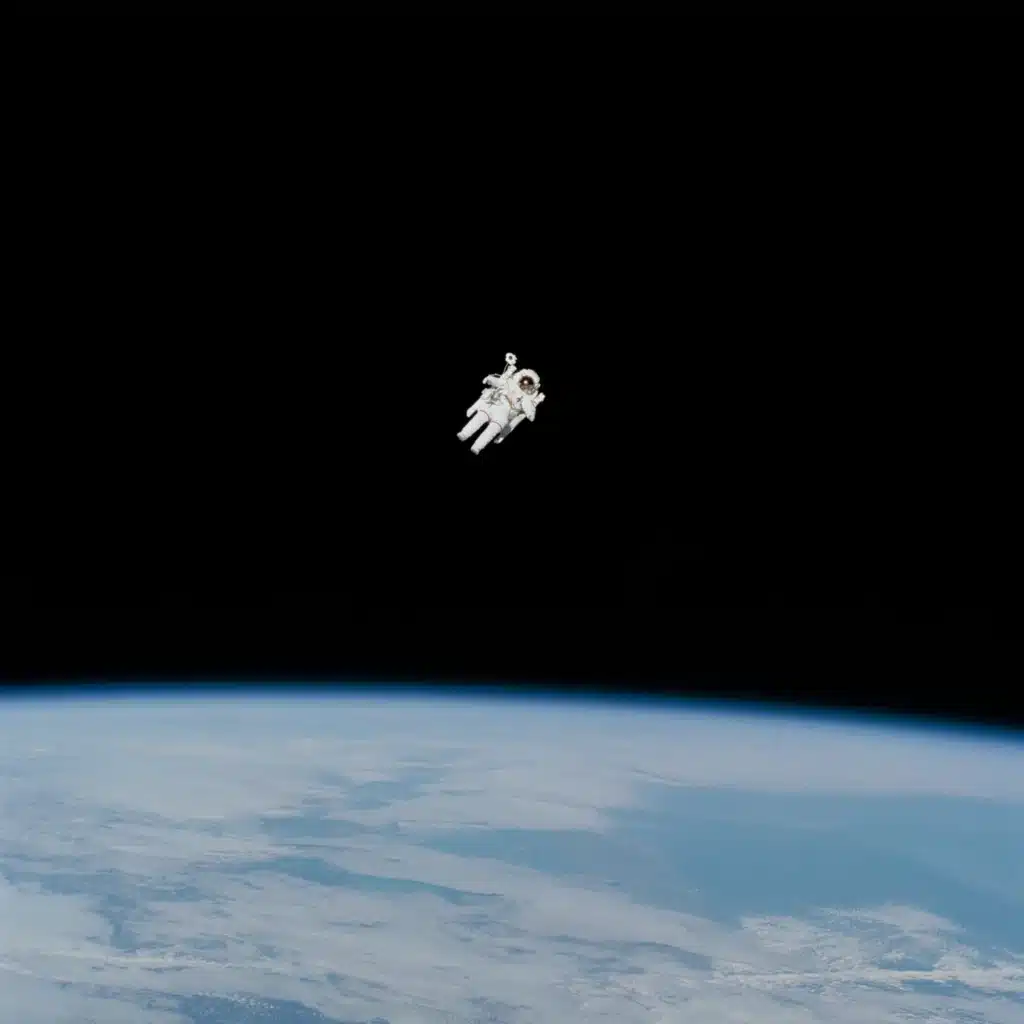
READ MORE! NASA discovers new super-Earth and it’s relatively close
The brightness prompted him to pull down the visor of his helmet, resulting in glare bouncing back into the camera.
The move made him appear faceless – meaning the astronaut was captured in time and space anonymously.
The result: anyone looking at the historic photo could pretend that it was them in the suit.
“My anonymity means people can imagine themselves doing the same thing,” McCandless said in an interview.
Adrift and untethered, the moment was preserved forever by fellow NASA astronaut Robert “Hoot” Gibson.
He used a Hasselblad camera he’d grabbed from the crew cabin of the Space Shuttle Challenger.
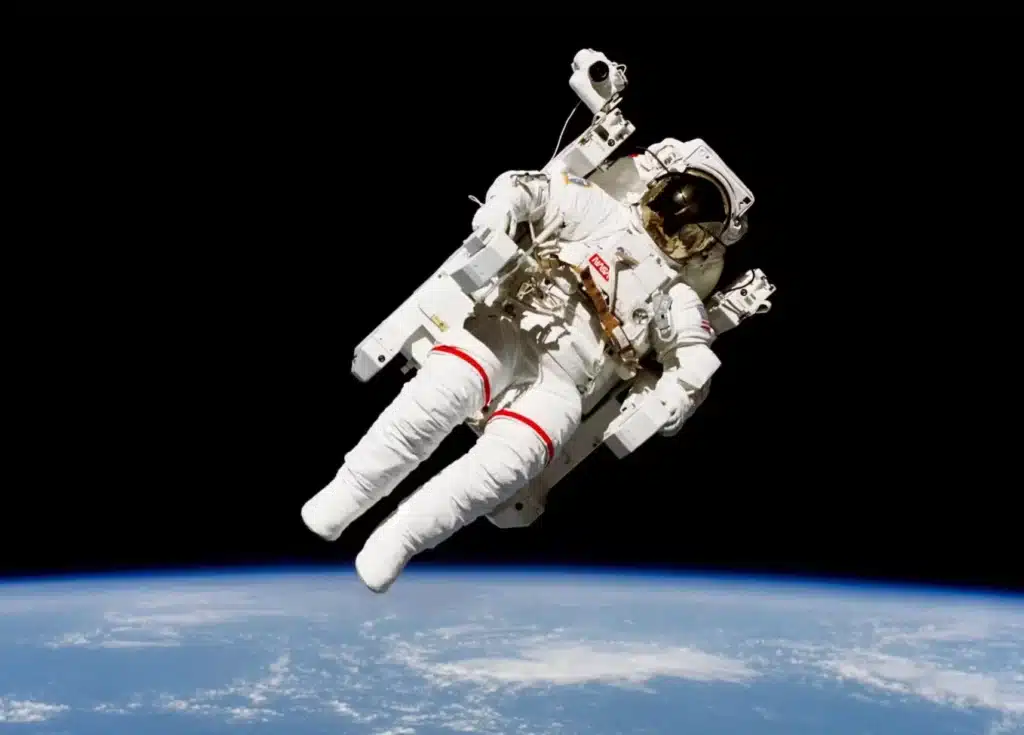
He’d learnt to angle the camera to get Earth’s horizon in the bottom of the frame.
He also managed to match Challenger’s 28.5-degree inclination in orbit.
Amid missions and everyday tasks, it’s proven life in space can change astronauts.
In fact, Astronaut Mark Vande Hei returned to earth a changed man after 355 days aboard the ISS.
So what was McCandless actually doing?
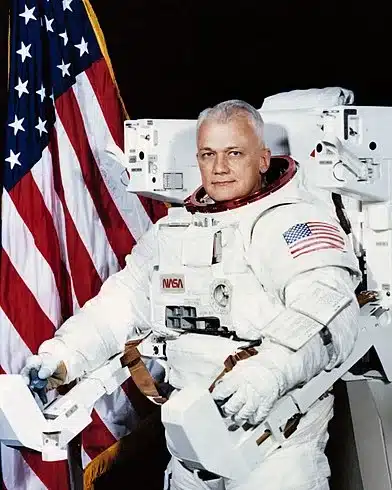
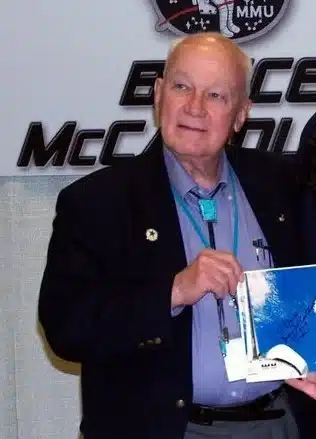
His role as CAPCOM, or capsule communicator, on the Apollo 11 mission, meant he was in charge of transmitting voice messages to the original Moonwalkers.
On 7 February, 1984, he was debuting a new technology, the hand-controlled Manned Maneuvering Unit (MMU) backpack.
The MMU was a hand-operated jetpack that allowed astronauts to fly freely in space.
It released gaseous nitrogen propellant from 24 thrusters and three gyros.
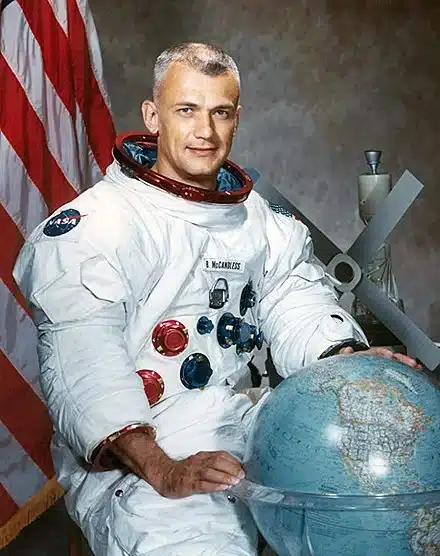
The new tech allowed McCandless to leave the relative safety of his spacecraft and control their navigation without a lifeline connecting them to the craft.
Footage has revealed it’s not always easy for astronauts to move around in space.
More recent footage revealed the POV of a spacewalk on the ISS traveling at 17,500 mph.
McCandless quoted his Apollo 11 colleague, Neil Armstrong: “It may have been one small step for Neil – but it’s a heck of a big leap for me.”
DISCOVER SBX CARS: The global premium car auction platform powered by Supercar Blondie

All Supercar Blondie contributors undergo editorial review and fact-checking to ensure accuracy and authority in automotive journalism. After gaining her BA Hons in French and English at the University of Nottingham, Amelia embarked on a vocational diploma from the National Council for the Training of Journalists (NCTJ). This led to numerous opportunities, from interning at Vogue to being on the small team that launched Women’s Health magazine in the UK, which was named the PPA Consumer magazine of the year for three years running. As Health, Beauty and Fitness editor, Amelia personally received a Johnson & Johnson Award and was shortlisted for both PPA and BSME titles. Since then, Amelia has created content for numerous titles and brands, including the Telegraph, 111 Skin, Waitrose, Red magazine, Stylist, and Elle, as well as being Head of Content at Vitality and Editor in Chief at INLondon magazine. “My superpower is translating technical jargon about the mechanical workings of a supercar into a relatable story you’ll want to share with your friends after you’ve read it.” After joining the SB Media family as a senior journalist in September of 2023, Amelia’s role has evolved to see her heading up the SEO output of the editorial team. From researching the most ‘Google-able’ key terms to producing evergreen content - it’s been a time of hard work, growth, and success for the editorial team and the Supercar Blondie website. “I like to think of myself as a ‘method journalist’. In other words: I live and breathe whatever I am writing about. When writing about fitness, I trained as a personal trainer, and as a beauty editor, I completed an ‘expert’ in scent diploma with the Fragrance Foundation. “During my tenure at Supercar Blondie, however, I did something I never thought possible: I passed my driving test at the age of 36. One day I’d love to train as a mechanic to better understand what happens under the hood, too. “My sweet spot is providing readers with a ‘takeaway’ (read: something new they didn’t know before) after reading every one of my stories. While I don’t claim to be an expert in the automotive world, I know the experts and bodies in the field to rely on to provide our readers with an informative and thought-provoking story every time they visit the site.”




